A gunshot unleashes a thunderous symphony of sound, reaching ear-shattering levels between 140 and 175 dB. That's right, we're talking decibels that could permanently damage your earing! To put it into perspective, even a modest .22 caliber rifle can clock in at a booming 120 - 140 dB, louder than a pneumatic drill or dare we say, a jet engine. So, why should you use ear protection when shooting a firearm? Allow us to hit you with the resounding answer, shot by shot.
Some of the questions we'll be answering in this article are:
- What is the recommended DB gun range hearing protection?
- Is NRR 25 good for shooting?
- What types of hearing protectors should I use when shooting a firearm?
- What are some tips for using hearing protection while shooting a firearm?
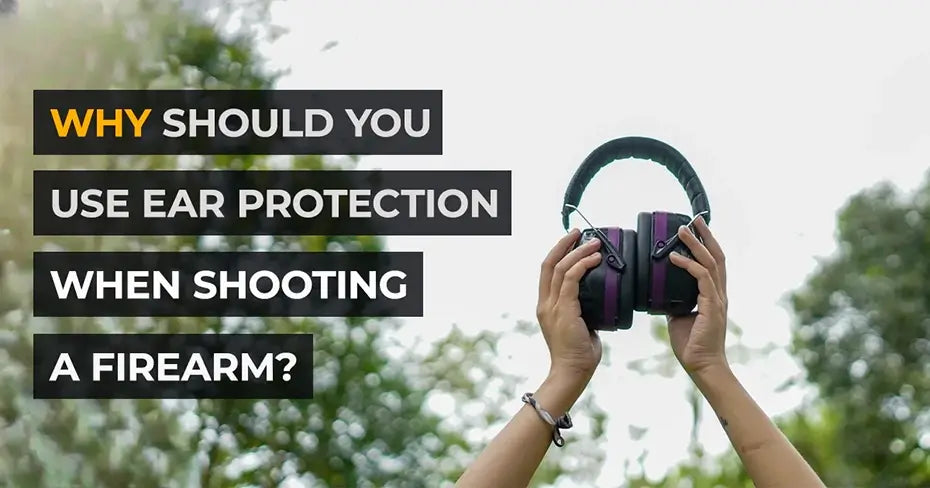
Why Should You Use Ear Protection When Shooting a Firearm
Gunfire is Dangerous to Unprotected Ears
Q: Why should you use ear protection when shooting a firearm?
A: Let’s put it this way: the sound produced by a gunshot can reach ear-splitting levels. We're talking about noise so intense that it canpermanently damage your hearing.
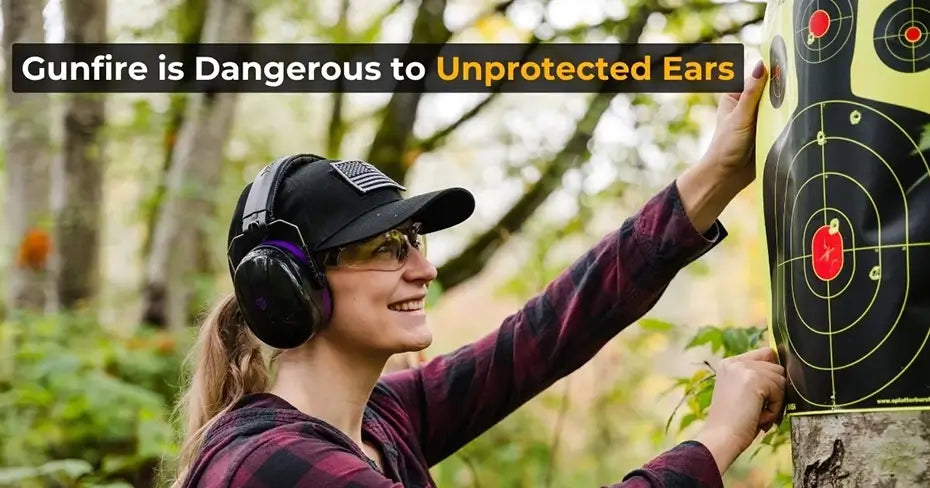
That's right, the same ears you use to enjoy your favorite tunes and engage in conversations. So, why risk compromising these essential audio receptors?
When a gunshot erupts, its explosive sound waves can wreak havoc on your delicate eardrums. The sheer force of the blast sends shockwaves through the air, reaching your ears in a split second.
Without proper protection, your eardrums bear the brunt of this sonic assault, leaving them vulnerable to irreversible damage.
A single gunshot can generate noise levels ranging from 140 to 175 decibels (dB). To provide you with some context:
- a chainsaw operates between 106 - 120 dB,
- a rock concert blasts approximately between 90 - 120 dB,
- a pneumatic drill clocks in from 110 - 120 dB.
Now, imagine the impact of those deafening gunshots on your ears.

Now, let's address the elephant in the shooting range: the misconception that ear protection is optional or unnecessary.
Some may brush it off, thinking, "Hey, it's just a few rounds; how harmful can it be?"
Well, let's clear the smoke and reveal the truth aboutwhy you should use ear protection when shooting a firearm.
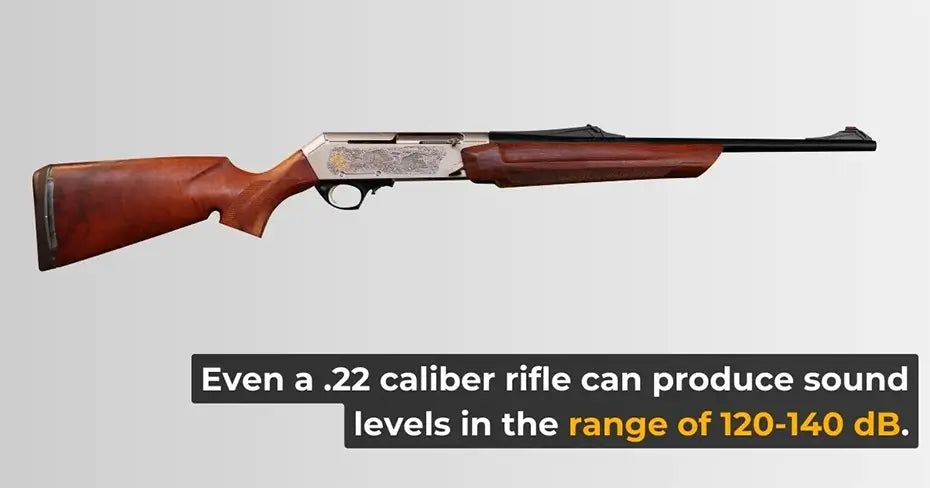 Even a .22 caliber rifle, which some might consider relatively tame, can produce sound levels in the range of 120-140 dB. That's louder than a jackhammer, a roaring motorcycle, and even a jet engine at full throttle.
Even a .22 caliber rifle, which some might consider relatively tame, can produce sound levels in the range of 120-140 dB. That's louder than a jackhammer, a roaring motorcycle, and even a jet engine at full throttle.
Using ear protection is not just a safety precaution; it's a smart move for anyone who values their auditory well-being. Whether you opt for shooting range earmuffs or earplugs, these nifty gadgets create a barrier, reducing the intensity of the sound waves before they reach your eardrums.
How many dB is a gunshot?
When it comes to firearms, they sure know how to make some noise! So the question is -how many dB is a gunshot?
A gunshot packs quite a sonic punch, and the numbers don't disappoint. On average, a handgun can unleash a formidable noise level ranging from 140 to 165 decibels.
When it comes to rifles, they take it up a notch, with reports of ear-ringing blasts reaching a staggering 160 to 190 decibels. That's enough to make your eardrums tremble and your neighbor's windows rattle!
Now, let's talk serious business. Anything above 140 decibels is no laughing matter. At these ear-splitting levels, permanent hearing injury becomes a real concern.
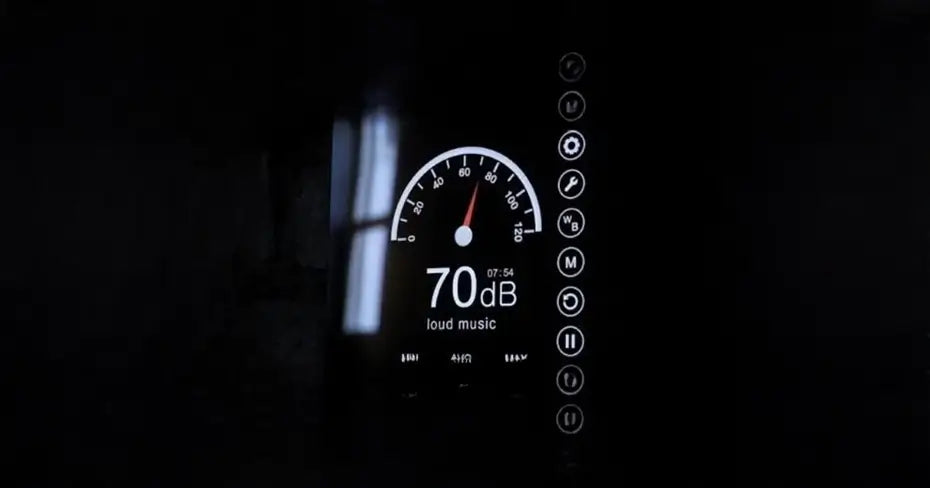
When you consider the intensity of a gunshot's sonic impact, it becomes clear that using ear protection is not just a suggestion; it's an absolute necessity. The right protective gear acts as a shield, reducing the ear-shattering decibels before they reach your eardrums.
What is the recommended dB for shooting ear protection?
The National Institute for Occupational Safety and Health (NIOSH) recommends using hearing protection for shooting at 85 DB or higher. Therefore, if the sound produced by your firearm exceeds 85 dB, it is advisable to utilize hearing protectors.
Is NRR 25 good enough for shooting?
Let's get straight to the point - no, NRR 25 is not good enough for shooting. The American National Standards Institute (ANSI) suggests using a minimum of NRR 28 or higher protection for shooting. This equates to ear protection providing at least 28 decibels of noise reduction.
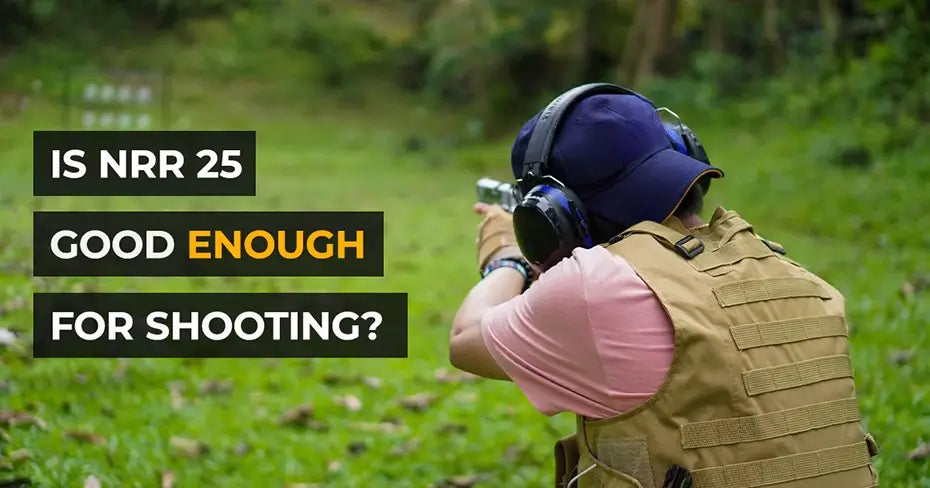
Are Your Ears Ringing After Shooting?
Has the sound of a gunshot left your ears ringing? It's not unusual to experience temporary hearing loss from exposure to loud noises like a gunshot. This ear-busting experience is called acoustic trauma, which can happen in one (shooting ear) or both ears.
Symptoms may include ringing in the ears, muffled hearing, dizziness, and balance problems. Keep this in mind the next time you ask yourself why should you use ear protection when shooting a firearm.
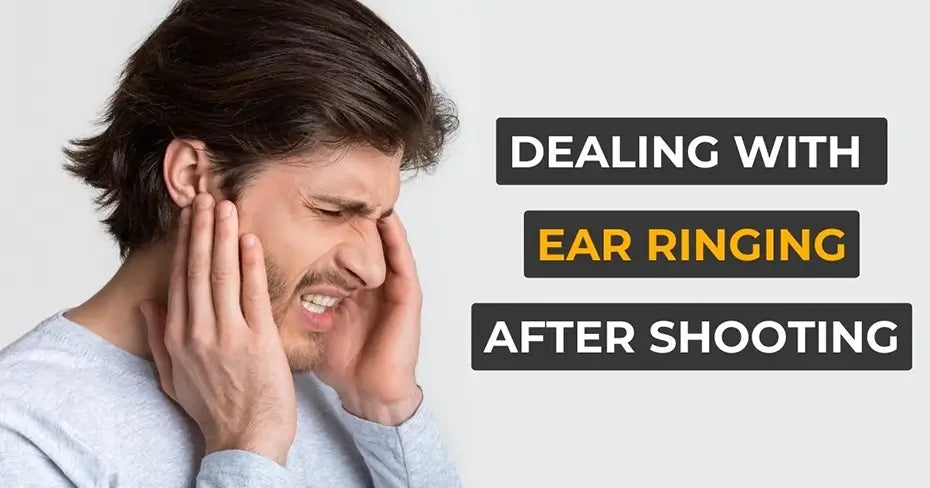
If you currently suffer from these symptoms after exposure to loud noise, don't play it by ear. Get yourself to a healthcare professional who will give you the third degree, perform a physical exam, and take your medical history. They may even order an audiogram or MRI to determine the full extent of the damage.
Dealing with acoustic trauma pronto prevents long-term hearing loss or other complications. Treatment options range from anti-inflammatory meds to sound therapy, which helps the brain get a better grip on sound.
To keep your hearing in good shape:
- play it safe - always wear hearing protectors when facing loud noises, and try not to overdo it during exposure.
- remember, you can't unhear what you've already heard, but you can hear less of it in the future!
Different Hearing Protection Types
When it comes to protecting your ears, you've got more choices than a kid in a candy store! Earplugs, earmuffs, electronic, non-electronic, over-ear, in-ear - the list goes on and on. Let's break down these different hearing protection types, shall we?
Earplugs: The Pocket-Size Hearing Heroes
What do shooting sports, sleep, and travel share? They all demand hearing protection.
Earplugs, though small, are effective in blocking harmful noise. Discreet and portable, they're ideal for shooters, providing comfort during sleep and travel too.
TradeSmart Earplugs, made from soft BASF Germany foam, offer cozy protection. With an NRR 33 rating, they ensure your ears are safe in noisy environments.
You'll get 200 individually packed pairs, perfect for sharing with fellow shooters. ANSI certified, these earplugs are a reliable choice for safeguarding your hearing in various settings.
Shooting Earmuffs: Effortless Protection with Style
Safety earmuffs are your straightforward solution to noise. Just put them on for instant noise reduction and comfort. Ideal for shooting ranges, lawn mowing, or seeking quiet, these earmuffs provide robust protection.
TradeSmart's shooting earmuffs not only shield your ears from loud sounds but also complement your look. They're compatible with safety glasses, ensuring eye protection, too.
Designed for comfort during long sessions, these earmuffs feature a 6-layer noise reduction system and an NRR 28 rating. ANSI rated and US-certified, they offer reliable, high-quality ear protection.
Electronic Earmuffs: A Sound Investment for Your Ears and Sanity
Electronic earmuffs offer a unique solution to the problem of loud noise exposure. With their ability to dampen dangerous noise levels while allowing the wearer to hear what's happening around them, they're ideal for those who need to stay alert and aware while protecting their hearing.
This feature makes them an excellent choice for a wide range of activities, from shooting and hunting to construction and industrial work.
Keep this on the down-low, but word on the street is that TradeSmart is about to drop some electronic earmuffs that'll blow your socks off. Shh, don't spill the beans to anyone. It's our little secret.
Why Should You Use Ear Protection When Shooting a Firearm - Pro Tip
***Are you looking for a surefire way to get the best hearing protection from dangerous noise levels?
Look no further than TradeSmart's earplug and earmuff combo! With this incredible combination, you'll achieve the highest Noise Reduction Rating (NRR) possible. The earplugs alone provide an NRR of 33; when combined with the earmuffs (NRR 28), you'll be able to reduce noise levels up to 38.
Tips for Using Hearing Protection While Shooting a Firearm
Here are a few tips on protecting your ears while shooting a firearm.
- Make sure you have the right type of protection. Various options are available, from ear muffs to ear plugs, and each has advantages.
- Check your fit. Ensure the hearing protection for shooting is snug against your ears and won't slip off during use.
- Practice good communication etiquette. When shooting in range with others, be sure to yell "fire in the hole" before pulling the trigger so everyone can protect their ears.
Conclusion
Shooting sports can be an exhilarating and fun experience, but without proper protection, it can quickly become a hearing-damaging nightmare.
But don't throw in the towel just yet, because there's an easy solution to this ear-splitting problem: proper hearing protection. In the end, choosing suitable safety measures is a small price to pay for the priceless value of your hearing health.
Don't let a temporary rush of excitement take away from precious moments with your family or rob you of the sounds of laughter and love. So, shoot smart, and protect your ears for a lifetime of cherished moments with the ones you love.
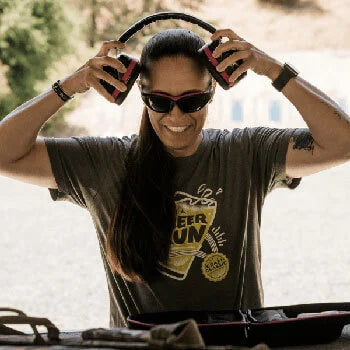
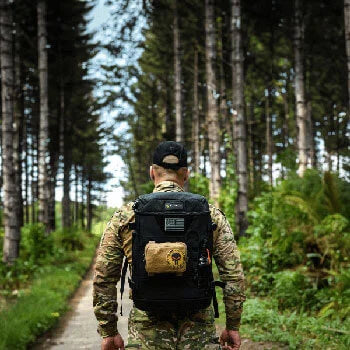
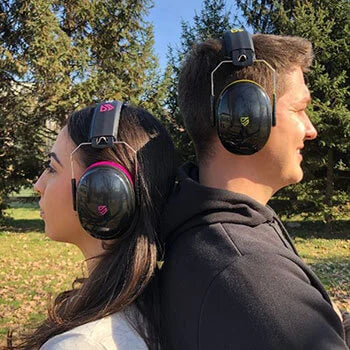
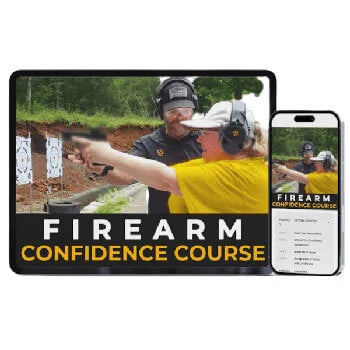
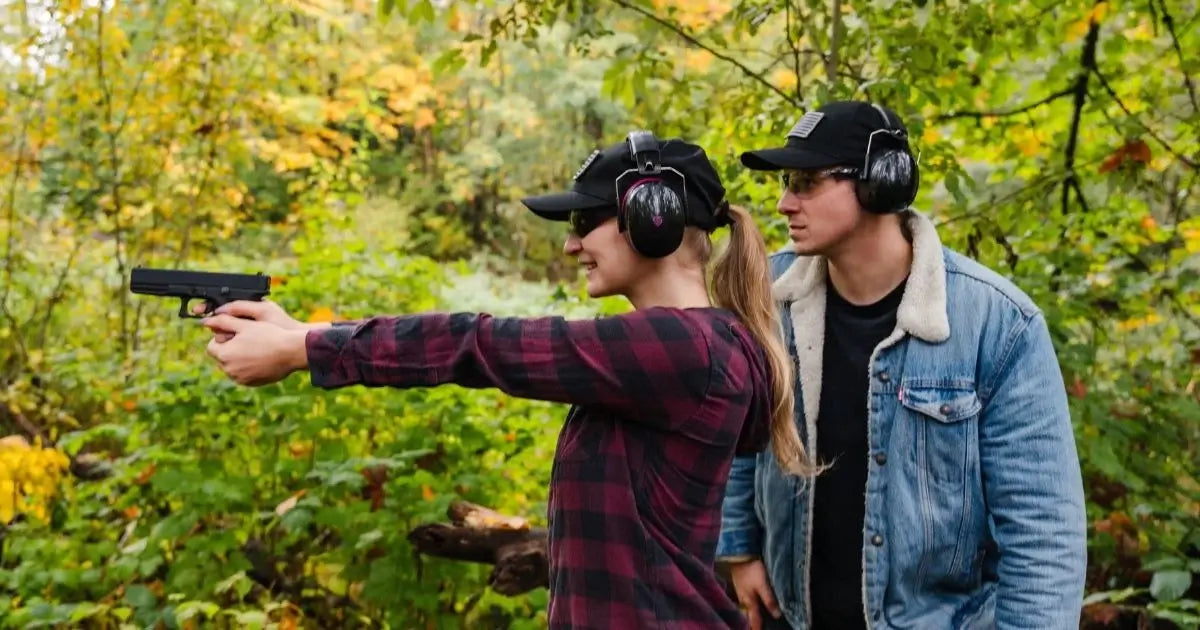


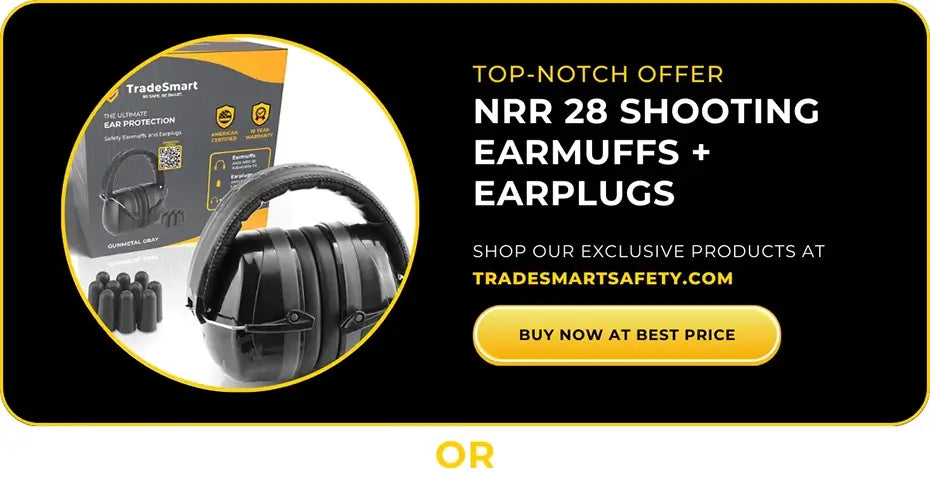

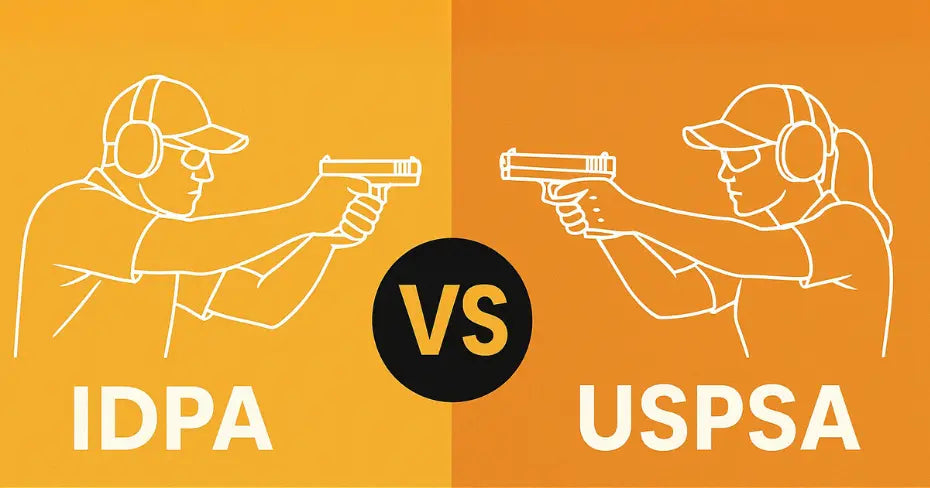
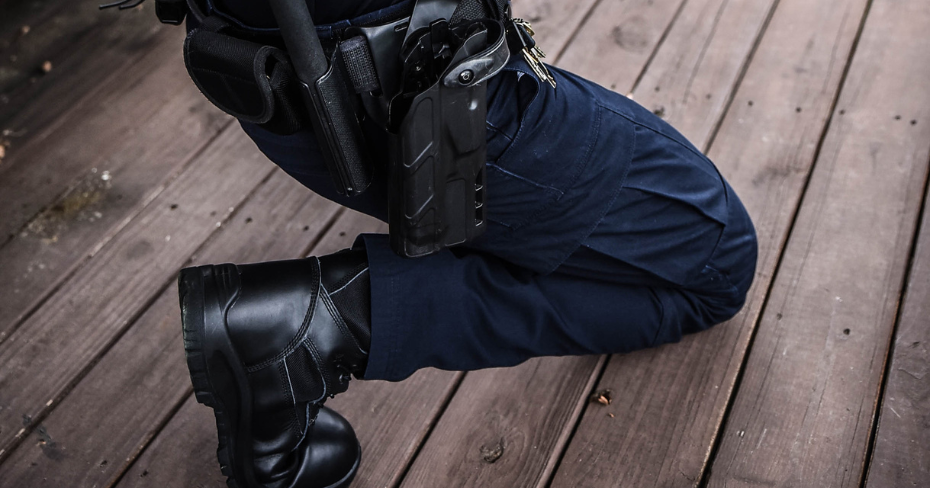
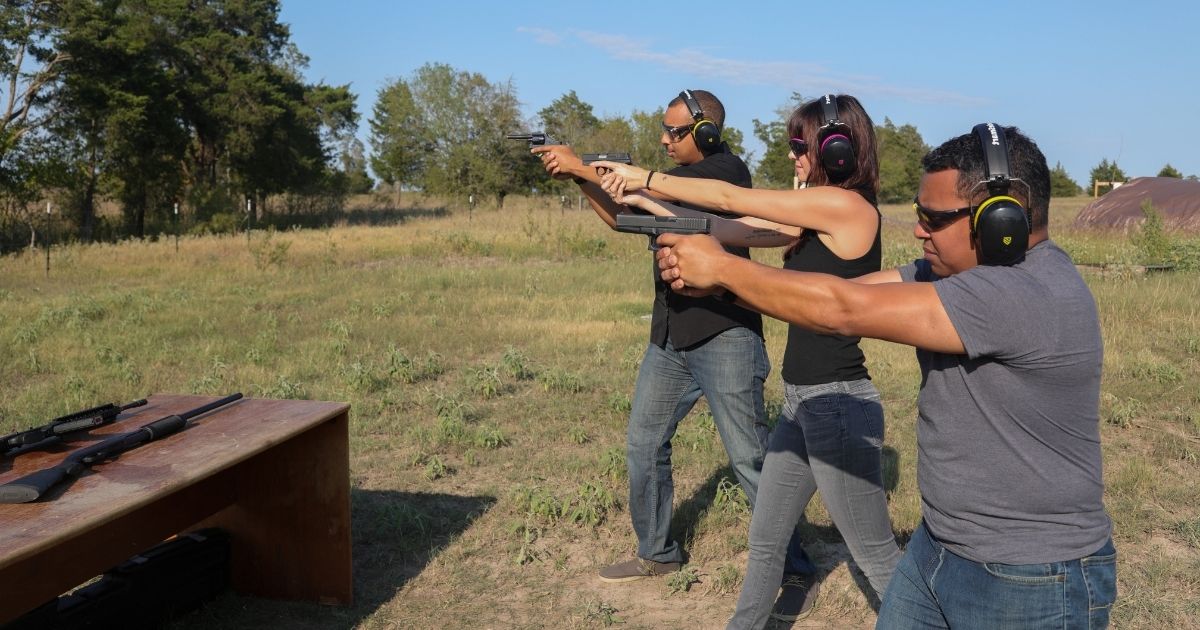
Leave a comment (all fields required)